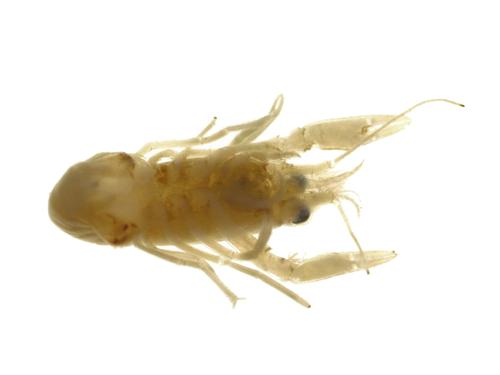| Common Name |
Crayfish |
| Phylum |
Arthropoda |
| Class |
Crustacea |
| Order |
Decapoda |
| Family |
Astacidae and Cambaridae |
| Description |
10-50mm, not including antennae. Decapoda are usually brownish green but can range from blackish to red or orange with speckled or mottled patterns (and tend to turn white when preserved). They have five pairs of walking legs with hinged claws on the first three pairs. The first pair of claws are greatly enlarged, like those of a lobster or crab. For more photos, refer to our online gallery: tinyurl.com/ssayzna |
| Habitat |
Commonly found in different sizes and velocities of running water, such as large rivers, lakes, ponds, marshes, swamps, ditches, and damp meadows. Usually found in shallow water (1-2m) although they move to deeper areas in the winter. |
| Feeding Information |
Omnivorous and will consume whatever is available. They feed on primarily decaying vegetative material but also consume live plants. When vegetation is not available, they consume live snails, aquatic insects, scuds, small fish, and fish eggs. |
| Water Quality Tolerance |
Facultative to the majority of environmental stresses or pollution. Able to withstand temperature ranges, pH, and alkalinity. Sensitive to some toxic substances, such as metals, insecticides, herbicides and lampricides. |
| References |
Voshell & Wright. 2002. |



